La Plata Peak stands out in the Sawatch Range skyline. From Twin Lakes, it looks like a perfect pyramid — just asking to be climbed.
I attempted it a few weeks earlier with a friend of mine who flew from Boston. We had to turn around because of bad weather, and because La Plata gave him frostbite. Yup, the mountain bites too.
Now, the forecast was calling for a blue-bird day with minimal wind. With over 2,500 feet of gain on a high ridgeline, this would be a great day to climb it.
I woke up in Leadville on a cold Monday in January. I drove to the trailhead, which is at the end of the Independence Pass winter road closure. I stepped out into the crisp 0 F temperatures, donned my snowshoes, and started to trudge through the forest.
I couldn’t have timed this ascent better. Not only would the weather be perfect, but someone climbed La Plata over the weekend. He broke trail through the deep snow, and there wasn’t any snowfall since. After I broke trail on La Plata a few weeks ago — with a pulk — I deserved this. Call it karma.
With the broken trail, I felt like I was going light-speed through the trees. Even with snowshoes, Colorado snow is so dry that one post-holes two or three feet with every step.
In the trees, the winter route deviates from the summer route. The summer route breaks treeline west of the Northwest Ridge and then climbs up the West Face to meet the ridge. That route, and that entire drainage for that matter, has loaded snow slopes waiting to avalanche. The winter route instead meets the ridge towards its beginning. It scrambles up the steep scree and talus headwall at the start of the ridge.
The route-finding is confusing in getting there, as the approach is through the forest. The guy I was following definitely had that problem. His snowshoe tracks went all over the place. Eventually, I found the right one and broke treeline — meeting the start of the ridge.
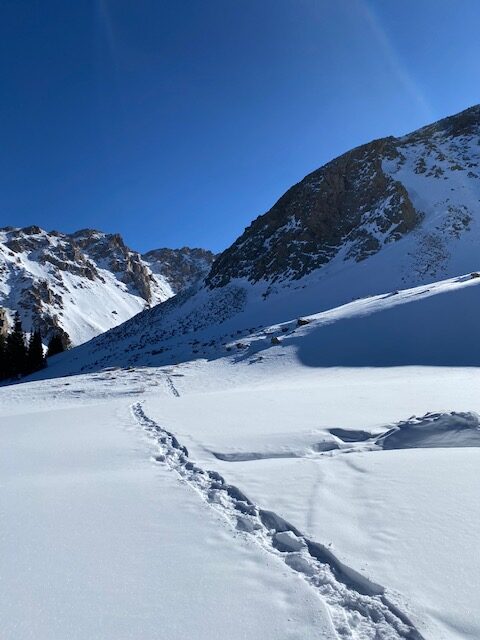
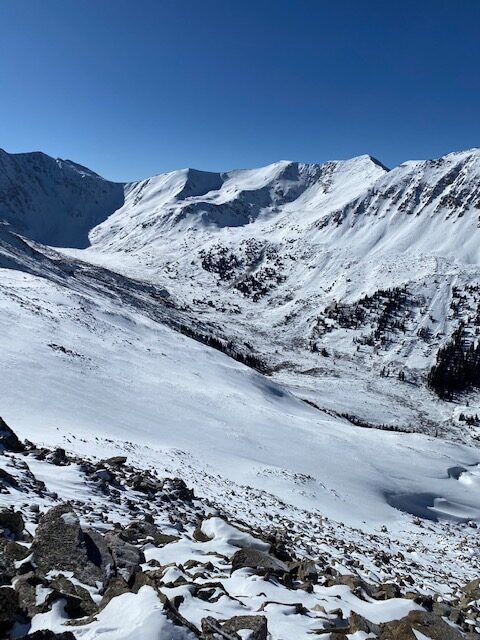
I continued, and then scrambled up the scree and talus headwall. It was an annoying but short scramble, but it was good variety to center the day. I’d brought a light ice axe with me. I didn’t need it, but I brought it out anyways so it wouldn’t feel useless and left out.
I reached the top of the headwall, and now would begin the 2,500 feet ridge ascent. I left my ice axe here.
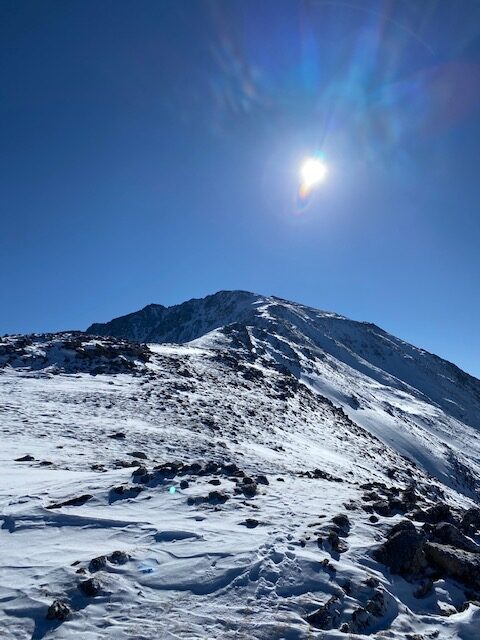
It seemed I was ascending at the same pace as the temperature. It remained single-digits up here too. But, with the sun and moving uphill — I was comfortable with nothing but a softshell and baselayer.
Even though the ridge is wind-blasted, patches of powder or deep snow could be there. So, I kept my snowshoes with me. Yeah, it’s an extra 4 pounds on my back. But, that would be worth not having to swim uphill in deep snow.
I marched uphill, and the going was straightforward. It doesn’t get any easier than a ridge ascent — just follow the ridge crest. For the lower part of the ridge: some parts were slightly loose scree, which was slow-going. Other parts were ice-encrusted scree, which went by quick.
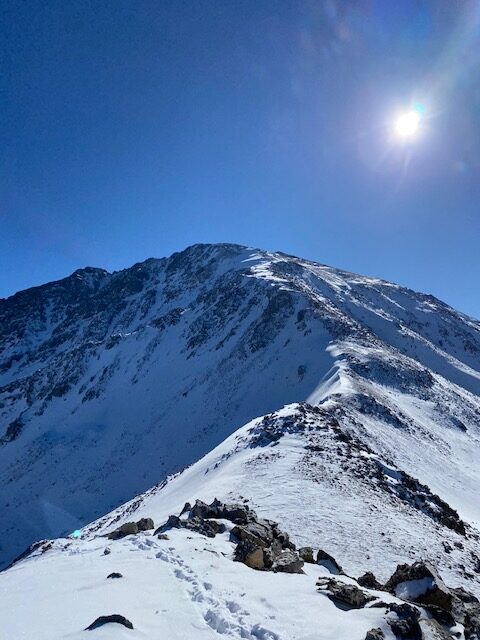
The highlight of the ridge climb was the ever-broadening views of Ellingwood Ridge. It’s La Plata’s dangerous, knife-edge ridge, punctuated by dozens of towers. Oh, and it’s all pure choss. For such an iconic ridge, it’s seen no more than a couple of winter ascents. In the summer, it’s a class 3 scramble — but that’s only far off the ridge crest. To follow it directly would entail endless fifth-class climbing on terrible rock. I’m sure it’s been done though.
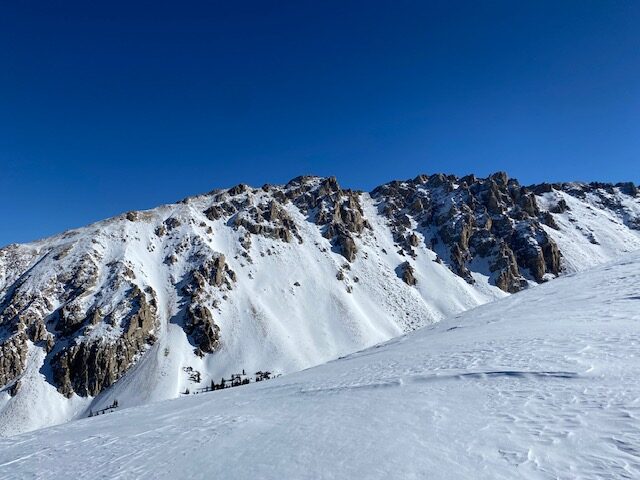
Towards the second half of the ridge, I had to put on snowshoes or microspikes in some sections. There was tough, wind-blasted snow which I made do with microspikes. Other sections had a thin, hard crust — where one would need both flotation and traction. The snowshoes were perfect here, and I was glad I carried them.
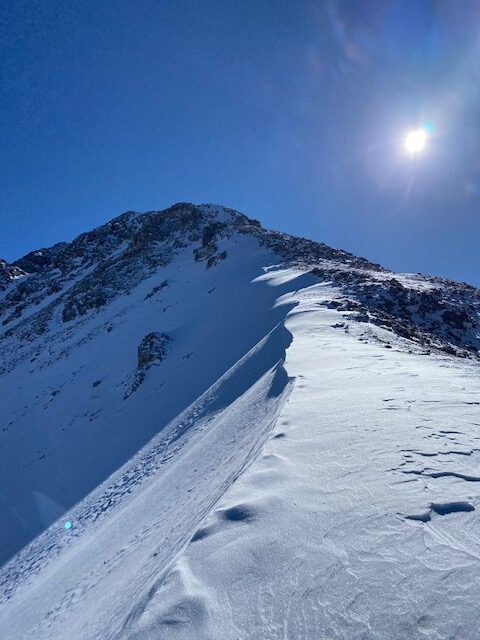
Though I’d been living at 10,000 feet of elevation for a month, I started to feel the altitude — especially at 14,000 feet. My pace slowed down for the last few hundred feet of ascent, but finally, I’d reached the summit.
The views from La Plata’s summit were phenomenal. The Colorado Rockies stretched before me, and I was near the top. It was a Monday, and there was likely nobody on any of these peaks. What’s a boring, brown, loose and rocky mountain range — sorry Sawatch — transforms into magic in the winter. I hung out for 20 minutes, enjoying the view.
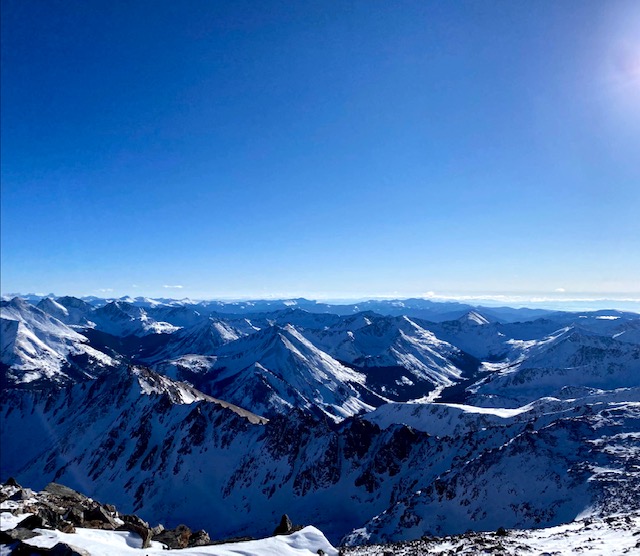
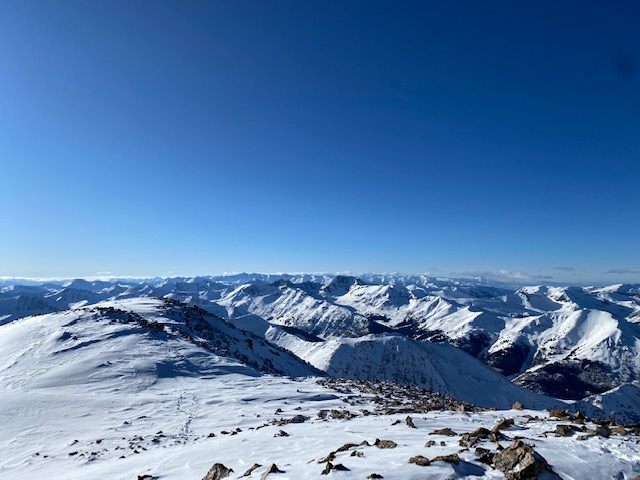
Then, I made my way down. I reversed my course on the ridge. Ellingwood Ridge was more spectacular now, shaded in the winter afternoon sunlight.
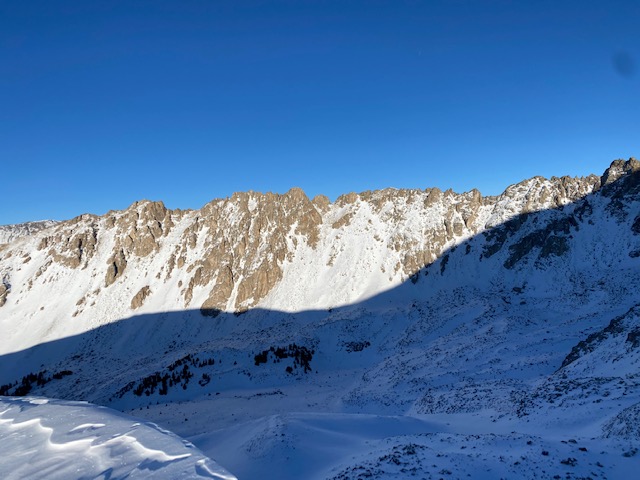
I grabbed my ice axe, which I left at the top of the headwall. I down-climbed it, then followed the footsteps into the trees.
I reversed my course through the trees. I didn’t need to put snowshoes on now. Two sets of tracks, plus the fact that I was going downhill, meant I could boot it. I glissaded a few sections, but for the most part, it was plunge-stepping down.
When I reached the car, it was dark. Not much sunlight in winter, and it was just after the solstice.
I drove back, reveling in the perfection of the ascent. There wasn’t a cloud in the sky, nor a single gust of wind. The sun was strong, and the going was good. Yes, the unexpected and dangerous adds to the adventure; but a perfect day in the mountains, with minimal risk, is amazing in its own right. And this was perfect.
